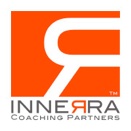
Diagnostics < Teams < Our Solutions < INNERRA
Team Coaching - Diagnostics






State-of-the-art diagnostic instruments support your process.
As input for our team coaching interventions we can use high-performance team models and corresponding (web-enabled) assessments that catalyze teams to their best. Some of our default instruments are:
-
✓Team DiagnosticTM’-model and Assessment (TCI -Team Coaching International)
-
The model and diagnostic assessments are based on research that shows that most successful teams have the means in place to take productive action and to build effective relationships that motivate and sustain the action.
-
Correspondingly the coaching model is built on two fundamental axes: 7 factors/strengths that optimise productivity and 7 factors/strengths that promote positivity and neutralise negativity. This constellation of strengths provides a complete picture for high-performing teams.
-
✓Immunity to ChangeTM mapping (Robert Kegan – Harvard Business School)
-
This methodology allows teams to reveal, in a structured and co-creative way, what collective (and individual) commitments are competing with their goals and their initial commitment to change. It visualises the team’s (and individual) basic assumptions (organising principles) that feed this ‘immune system’ and allows for action on deeper levels towards sustainable change and growth.
-
✓Leadership Culture SurveyTM (TLC - The Leadership CircleTM)
-
The Leadership Culture Survey is the most comprehensive assessment available on the overall health and effectiveness of the leadership of your organisation. Used for your entire organisation, or just a leadership team, the Leadership Culture Survey tells you how your people view their current leadership culture and compares that reality to the optimal culture they desire. It will also measure how your leadership culture compares to that of other organisations.
-
✓MBTITM Team Process (O.P.P.)
-
The MBTI instrument sorts individuals into psychological 'types' so that they can identify how they are similar to some people and different to others. It is a personality profile tool that allows people to gain an understanding of their preferences, particularly with respect to energy source, information gathering, decision making, and life style/work patterns.
-
The MBTI assessment as part of a team process is used to develop understanding of one’s self and co-workers to enhance or create effective working relationships, to get better acquainted with one another, the team leadership, and the team culture.
-
✓TKITM - Thomas Killman Conflict Mode Instrument (O.P.P.)
-
This model and diagnostic assessment boosts awareness around the choices a team has in dealing with conflict situations. It reveals the members’ individual preferred conflict styles (i.e. 5 styles on axes of assertiveness and willingness) and addresses the collective effect of them on the team’s conflict handling capabilities.






















INNER LEADERSHIP
OUTER GREATNESS
